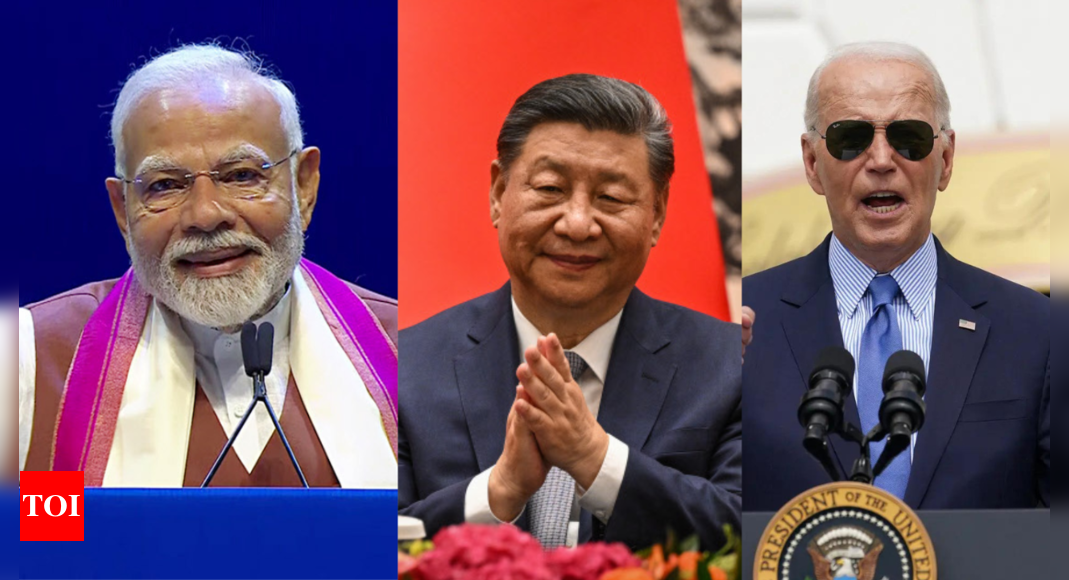
The Lowy Institute report underscores the broader power dynamics in Asia, noting that the region remains dominated by the United States and China. Despite China’s continued economic and military growth, its power is plateauing, largely due to slower economic growth and long-term structural challenges.
“China’s power is neither surging nor collapsing, but plateauing,” the report said. “Flatlining economic capability, driven by slower economic growth and longer-term structural challenges, means that China’s economic clout, while still commanding, is no longer growing.”
In contrast, the United States continues to lead in six of the eight broad measures of power analyzed in the report. However, China has closed the gap in military capability, with experts suggesting that Beijing is now better positioned to deploy military forces rapidly in the event of an interstate conflict in Asia.
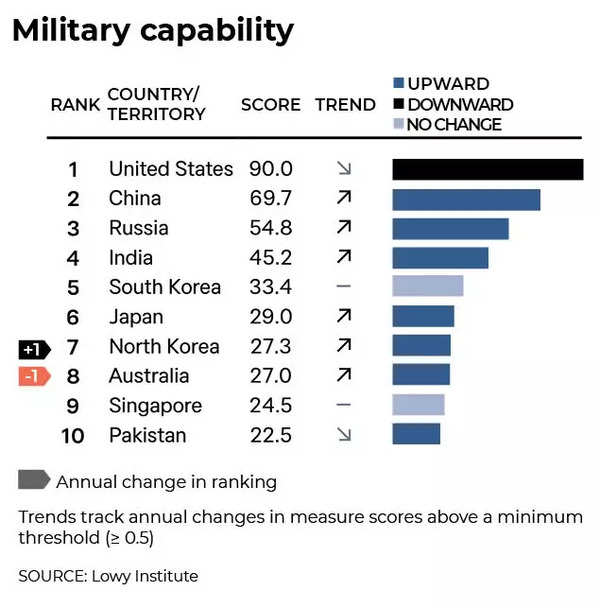
India’s rise
For years, the narrative of India’s potential has been a staple of foreign policy discussions, often more aspirational than factual. The 2024 Asia Power Index, however, suggests that the rhetoric may finally be catching up with reality. As the report notes, “The 2024 Asia Power Index finally sees a reversal of fortune for India, with it narrowly surpassing Japan to now rank 3rd for overall power in Asia.”
India’s diplomatic influence saw a notable rise. The report credits PM Modi’s global leadership and strategic ambition for this improvement. “Experts surveyed appraised Prime Minister Narendra Modi’s global leadership and strategic ambition more highly,” the report said.
India participated in the sixth-highest number of diplomatic dialogues with Asia Power Index countries in 2023, suggesting that its non-aligned strategy has yielded modest gains in its international standing. The Index notes an increase in India’s Diplomatic Influence, attributing it partly to the country’s increased tempo of diplomatic activity in 2023. “Both these results suggest that India’s strategy of nonalignment has modestly benefited its global standing,” the report says.
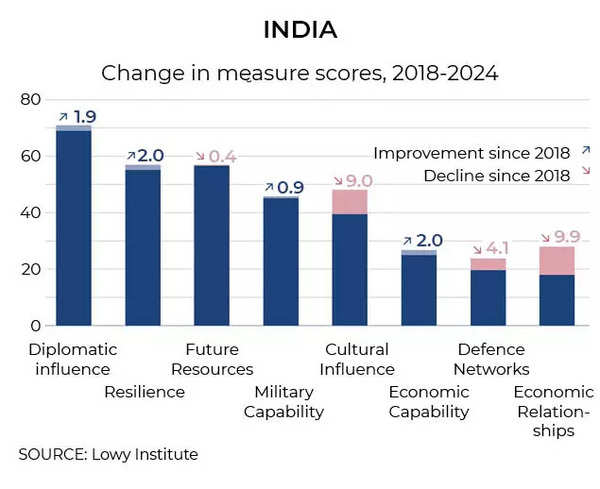
This ascent is not without its complexities. India’s strength, the report suggests, lies primarily in its vast resources—a burgeoning population, expansive landmass, and an economy that now ranks as the world’s third-largest in terms of purchasing power parity. The country’s post-Covid economic resurgence has been particularly noteworthy, with its Economic Capability score increasing by 4.2 points.
Perhaps more interestingly, India’s score in Future Resources saw a significant bump of 8.2 points. This metric, which projects the future distribution of economic, military, and demographic resources, hints at India’s potential demographic dividend. As the report observes, “India’s youthful population may well deliver a demographic dividend over the decades ahead, unlike many other countries in Asia, including rival China, that are rapidly ageing and whose workforces are contracting.”
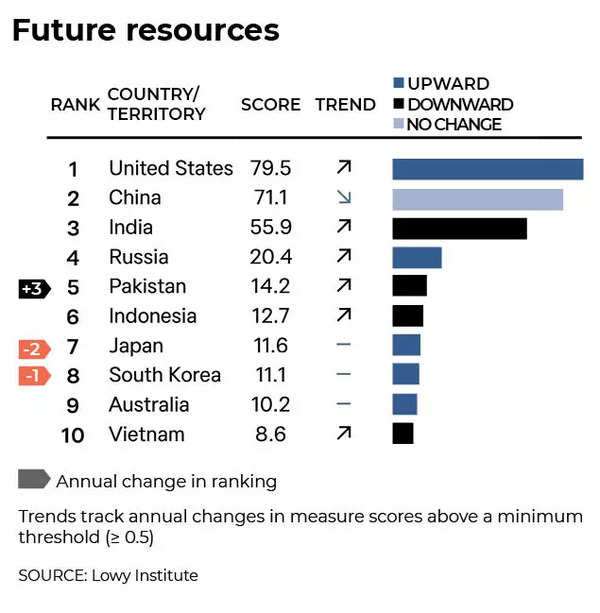
The Index notes an increase in India’s Diplomatic Influence, attributing it partly to the country’s increased tempo of diplomatic activity in 2023. “Both these results suggest that India’s strategy of nonalignment has modestly benefited its global standing,” the report states.
Yet, for all its progress, India’s rise remains a work in progress. The Index points out a “large gap” between the narrative of “India rising” and the reality of its limited power projection in Asia. Economic Relationships remain India’s Achilles’ heel, with the country losing ground in this metric and being overtaken by Indonesia. The report bluntly states, “India’s low-level economic integration with the larger economies in Asia and weak participation in regional economic architecture means this trend is set to continue.”
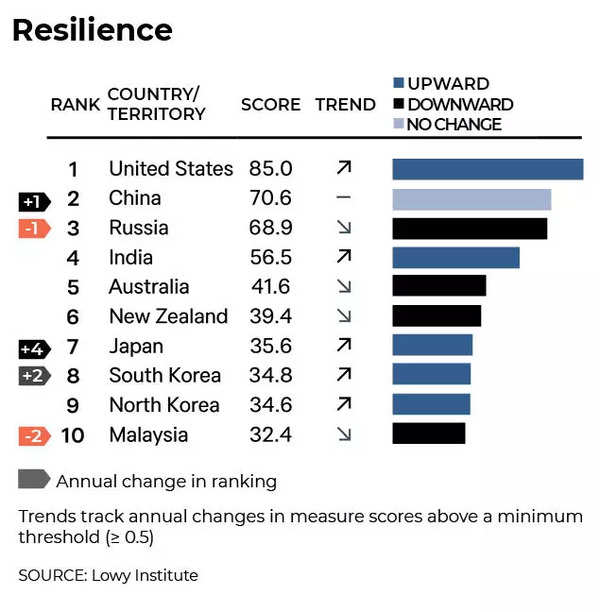
In the realm of defense, India’s position is equally complex. Its score for Defence Networks declined for the third consecutive year, with the country slipping to 9th place. The report attributes this to “India’s nonaligned stance and caution about deepening security cooperation with the US alliance network.” This positioning was exemplified in 2024 by the emergence of the “Squad”—a security-focused group comprising the United States, Japan, the Philippines, and Australia—which notably excluded India.
Perhaps most tellingly, the report highlights India’s significant “power gap”—the difference between its projected influence based on resources and its actual influence. This gap, the largest in the region barring Russia and North Korea, suggests that India has “plenty of latent potential to increase its influence in Asia, especially outside its own Indian Ocean neighbourhood.”
As the geopolitical landscape of Asia continues to evolve, with China’s power “plateauing” and the United States maintaining its lead in six out of eight measures, India’s role becomes increasingly pivotal. In the words of the Lowy Institute’s report, “New Delhi still has limited ability to project power and influence east of the Malacca Strait. However, the fact that its influence remains well below the level promised by its resources suggests it still has ample potential for further growth as a major power.”
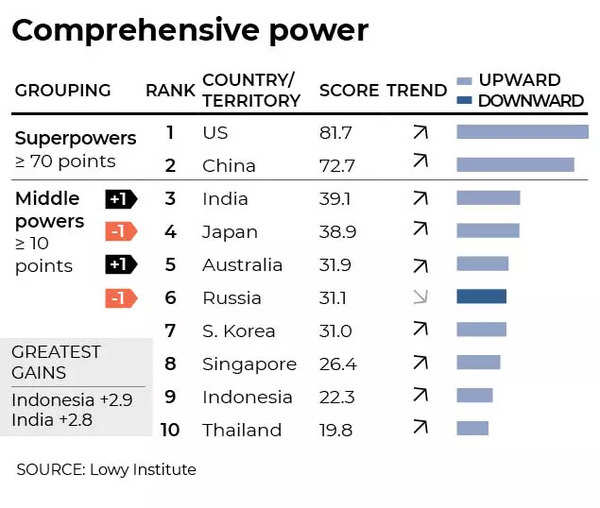
As the world watches, the question remains: Can India translate its vast resources and growing diplomatic clout into tangible regional influence? The answer, it seems, will shape not just India’s future, but the balance of power in Asia for decades to come.
(With inputs from agencies)



